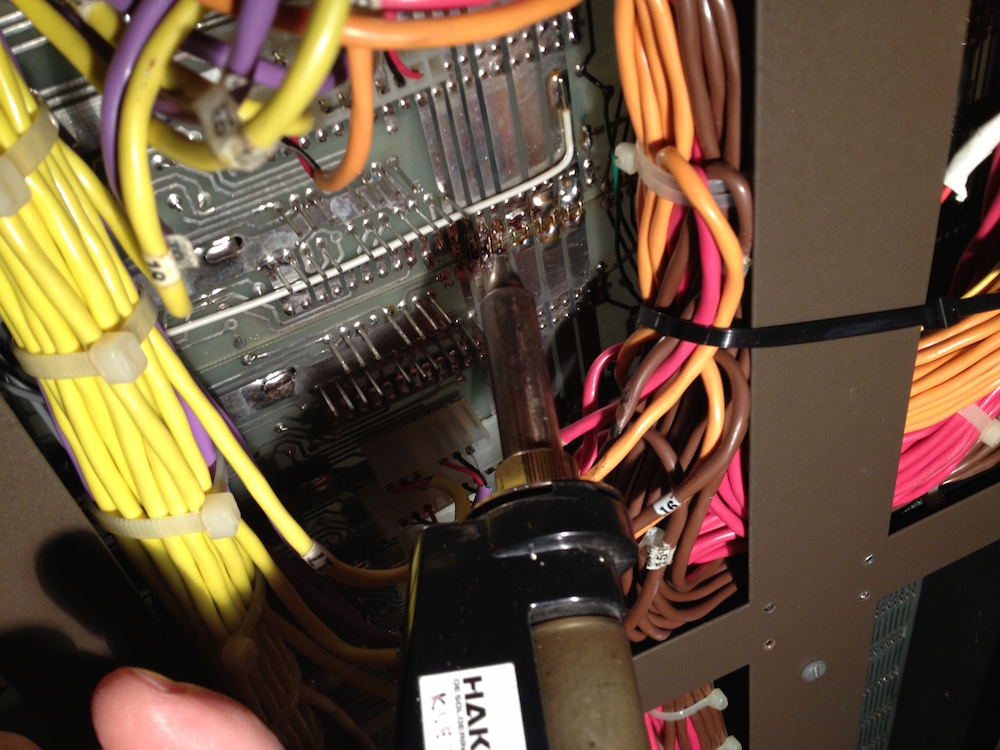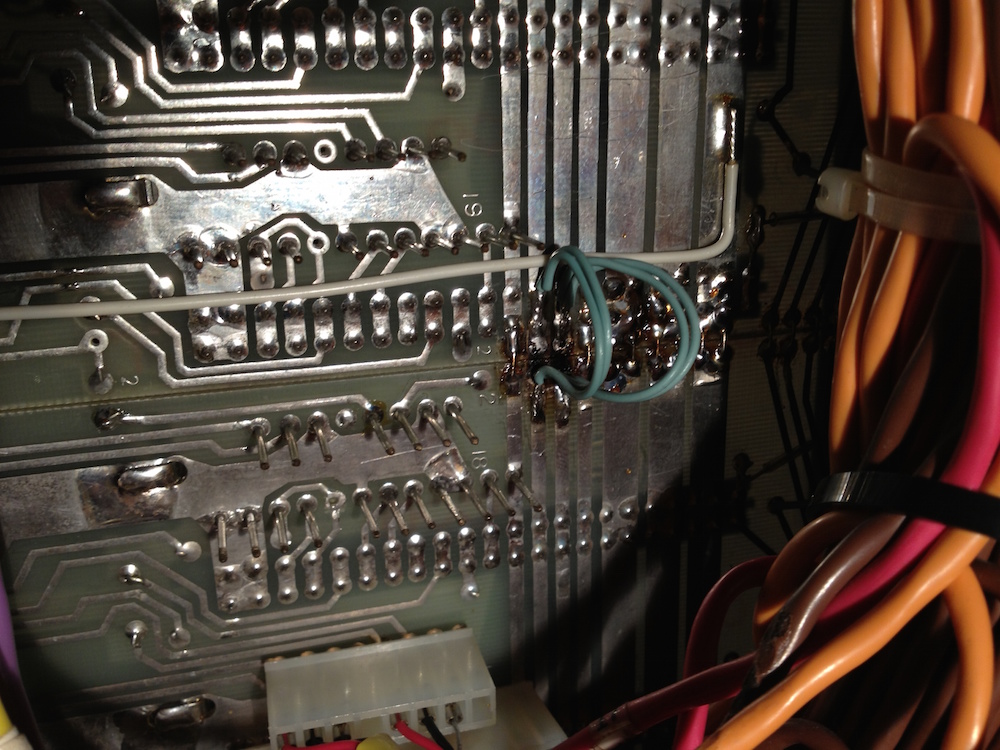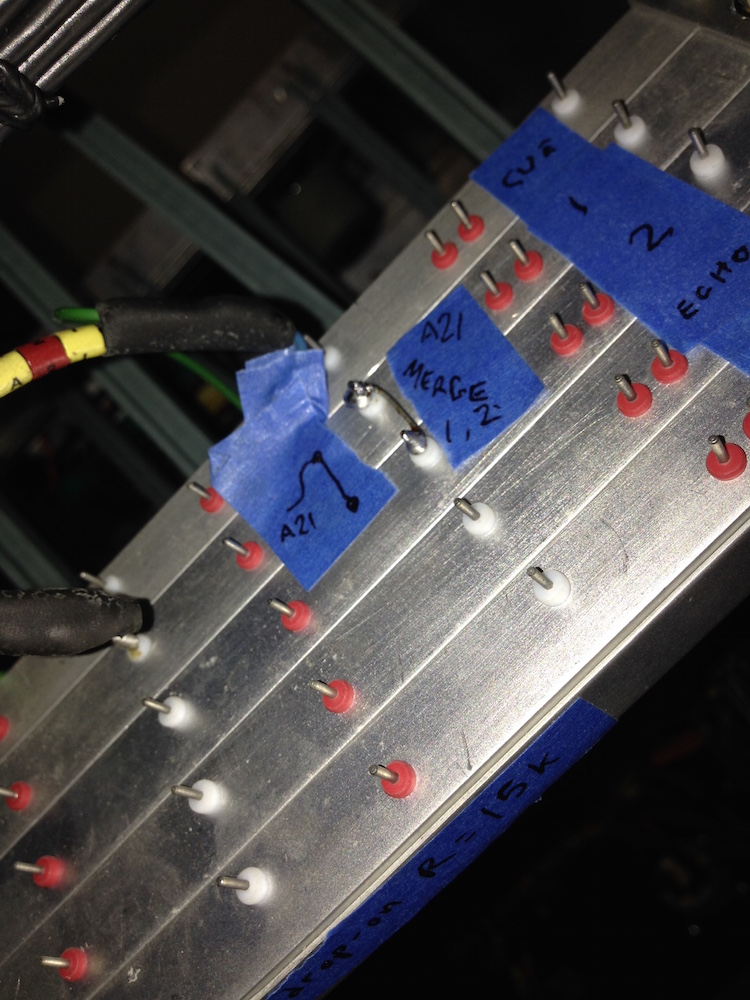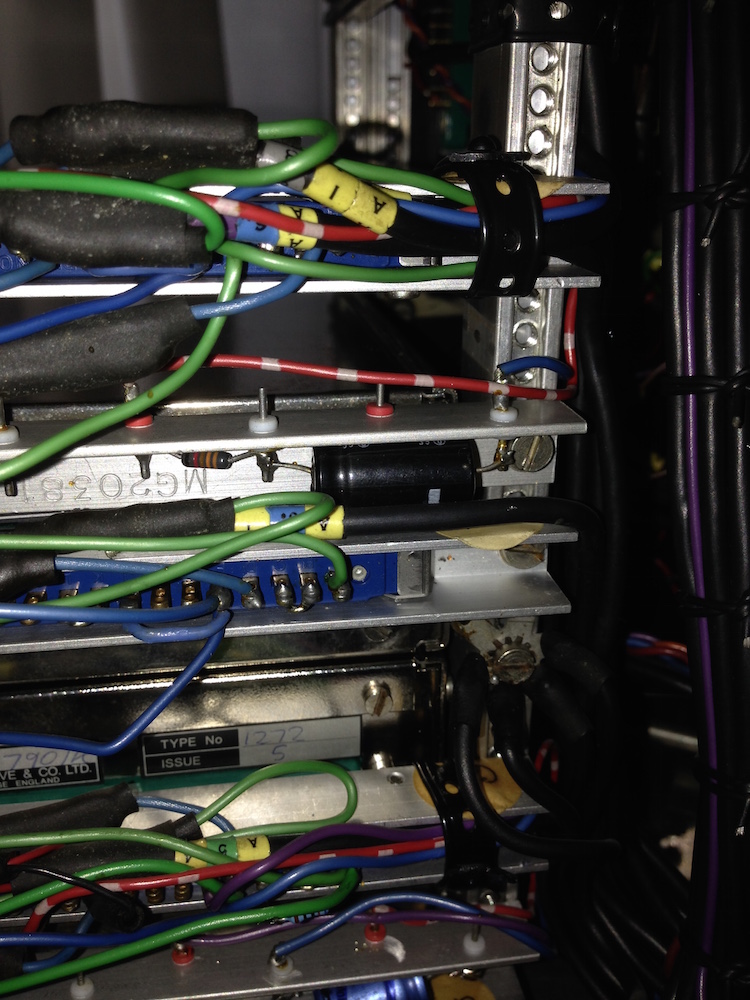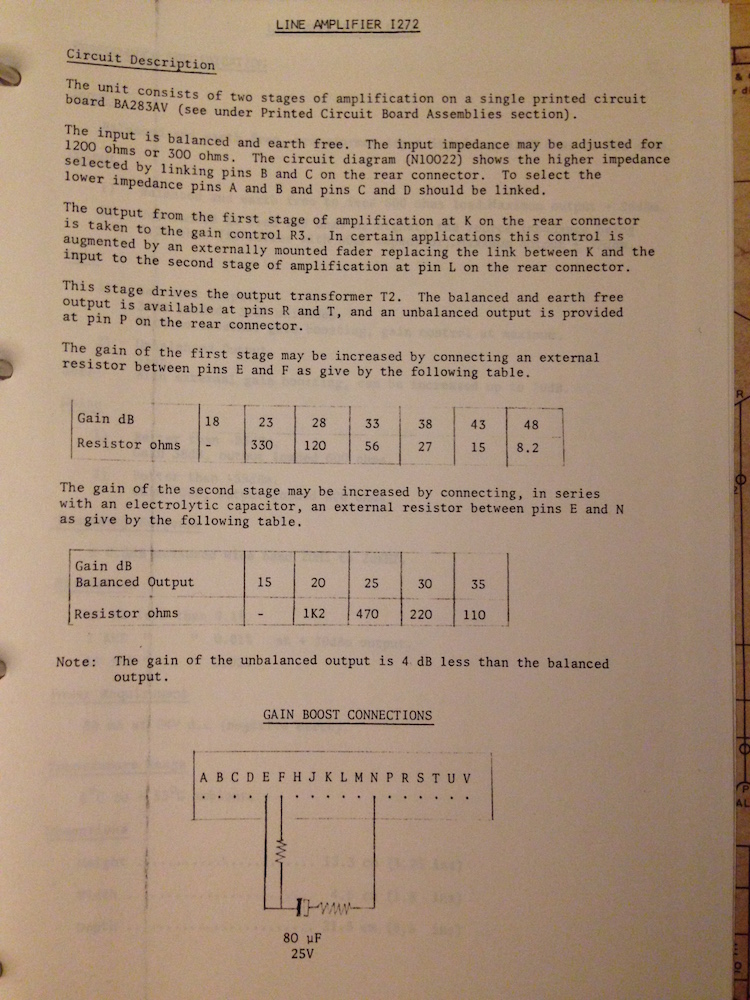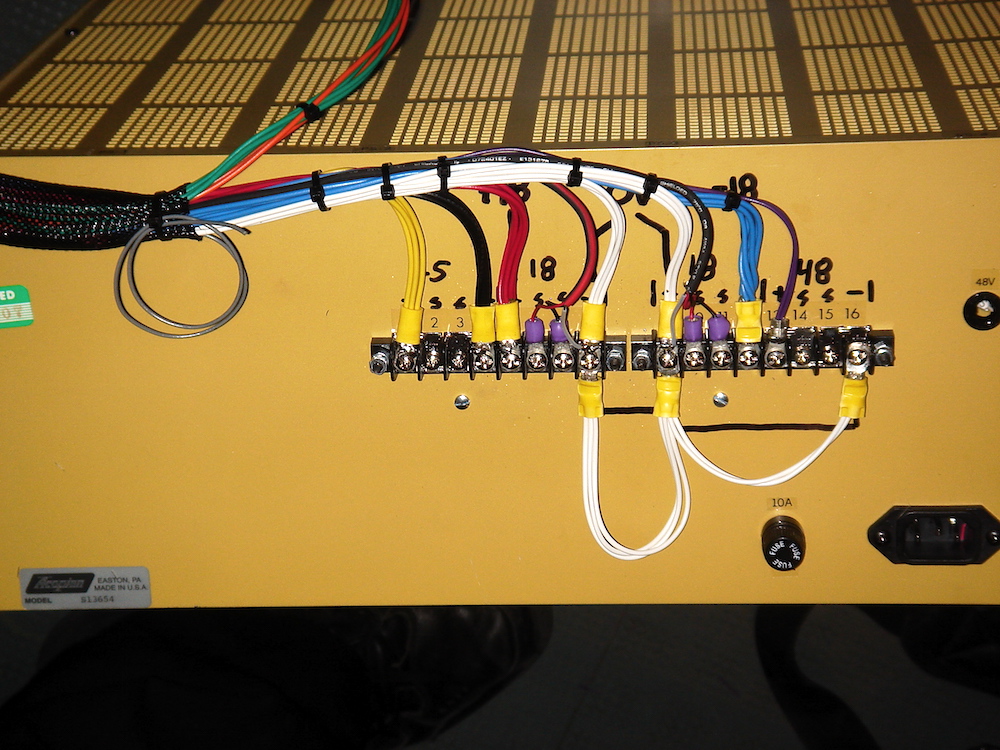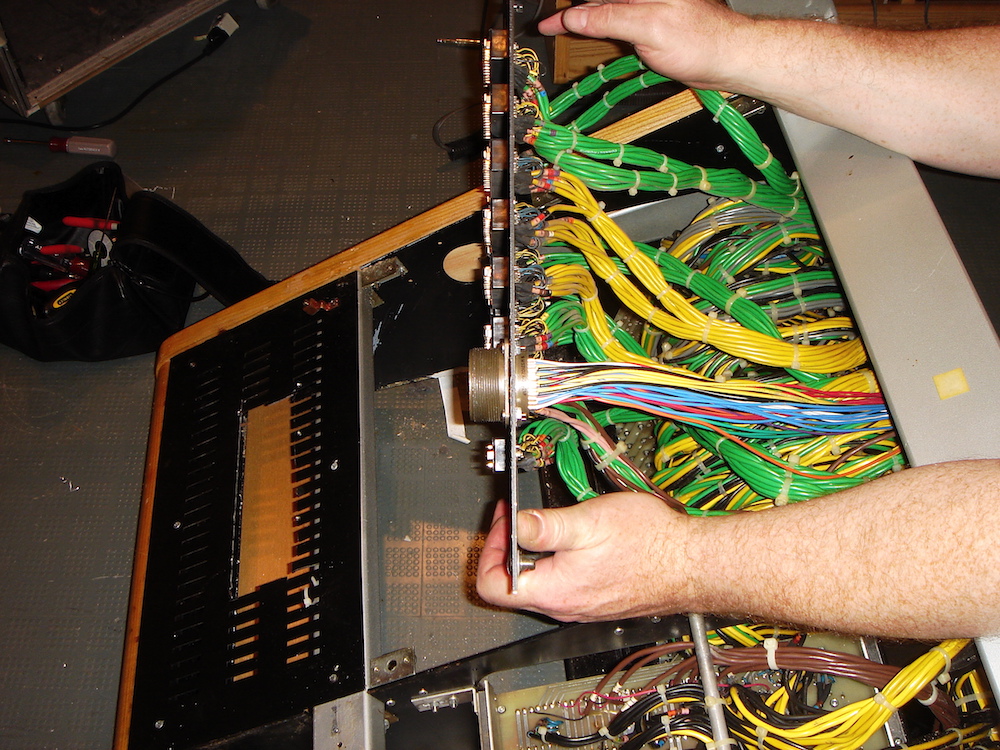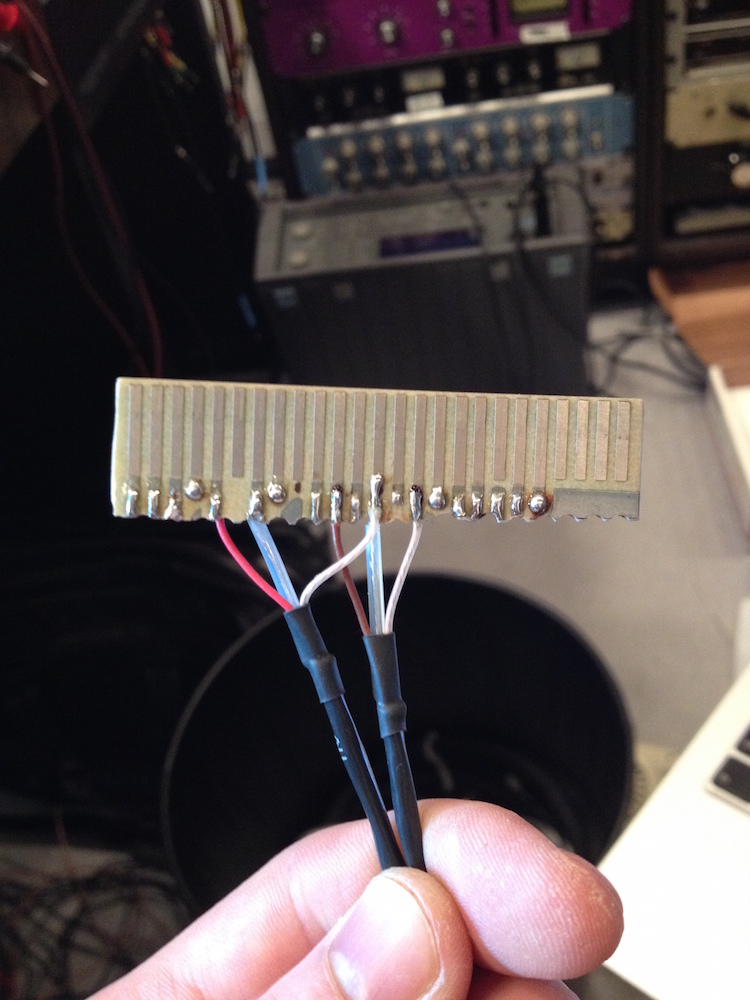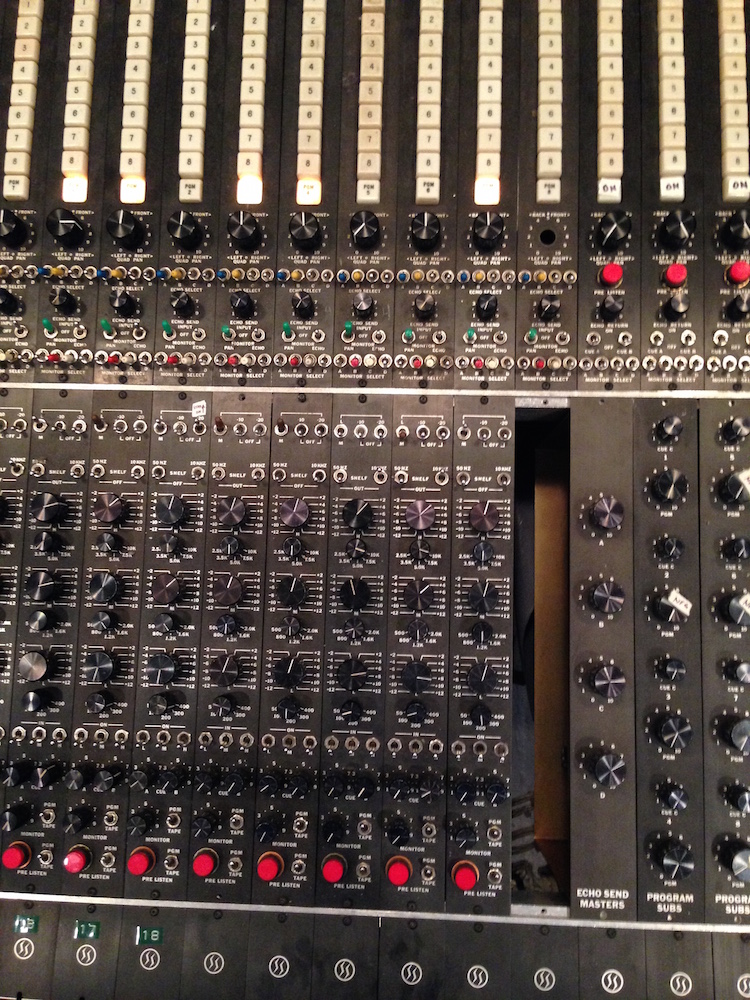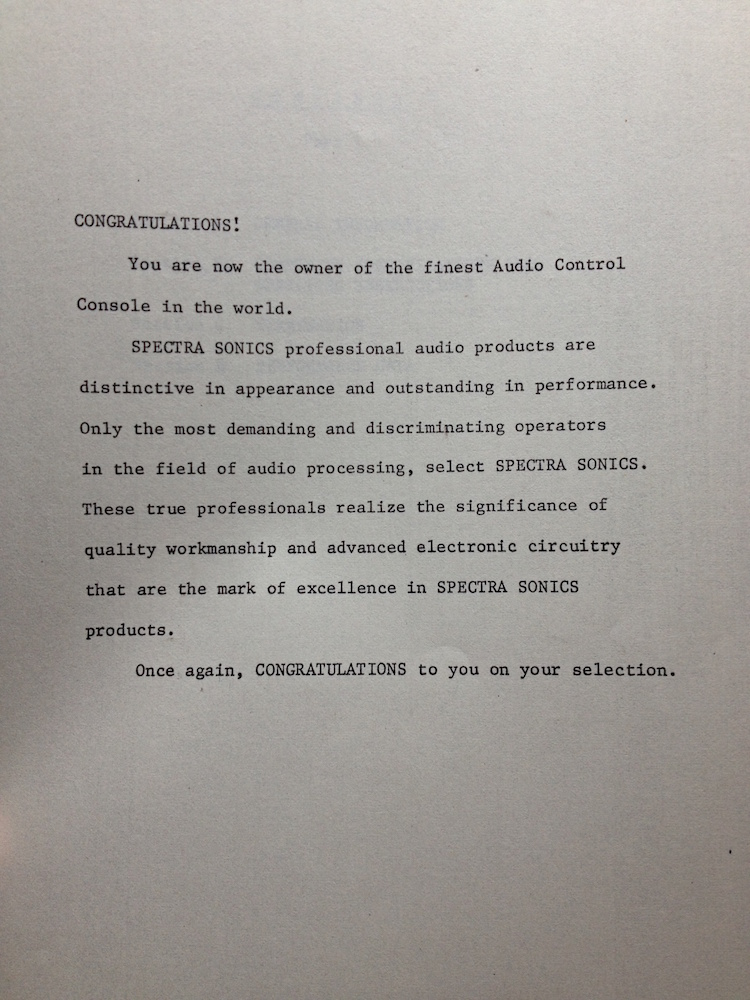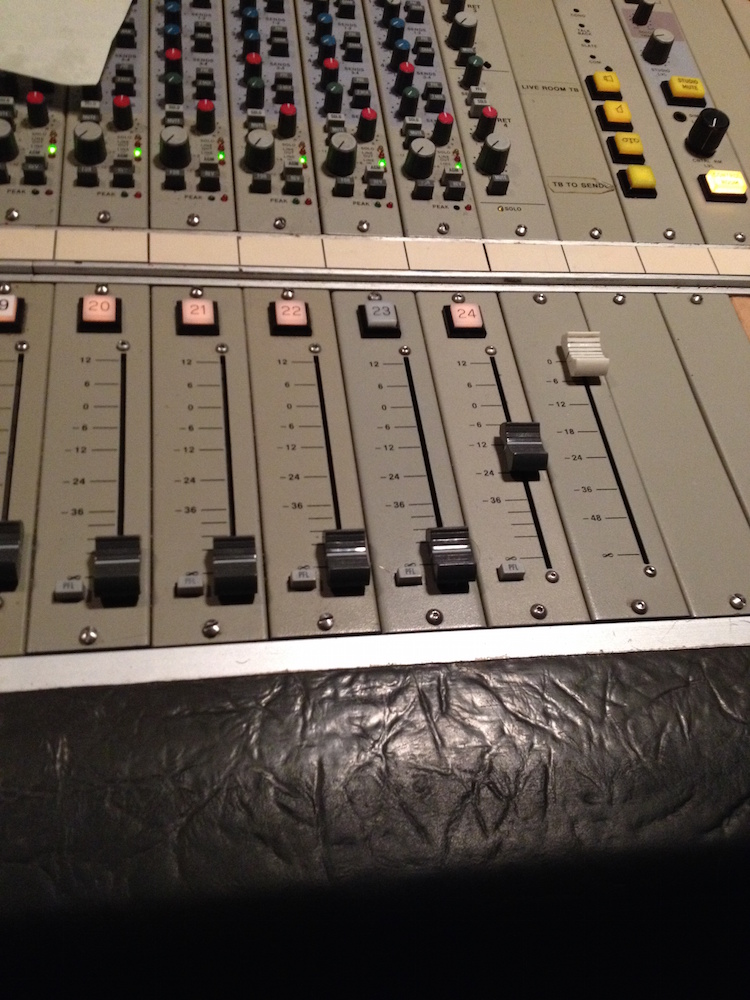There is a joke amongst studio techs that MCI stands for "Most Contacts Intermittent", and it's basically true. It's great sounding, solid, workmanlike gear once you've got it going but there can be so many bad contacts and solder joints the chase out along the way.
Here we have a 428B console where the issue was certain channel and buss signals disappearing. The culprit ended up being solder joints which cracked due to flexing at the seam between two sections of motherboard PCB. Had MCI used flexible jumper wire like some other manufacturers this might not have happened, but it did so we desoldered the intermittent jumper wire and replaced it. That's what was bring down the busses. The intermittent channels were due to cracked solder joints at the base of the male molex pins soldered to the underside of these motherboards, presumably also from flexing.
Another issue with these consoles is that they use a proprietary MCI op amp (2001 or 2003) which (is arguably not very good and) sometimes fails and it can be rather difficult and expensive to source spares. Normally we would just replace it with something else, but the TO-99 footprint and +/-24VDC power supplies make that rather difficult. Eisen Audio solved the problem by replacing the stock MCI power supplies (which have loud fans and make for lousy sound quality) with a pair of Acopian GoldBox A Series which not only sounds a lot better but allowed us to lower the supply voltage to +/-21.5VDC by placing a couple resistors in the sense lines. Now, using our TO-99 to DIP-8 adaptor PCB we can use any sort of generic IC op amp as replacement or upgrade.


